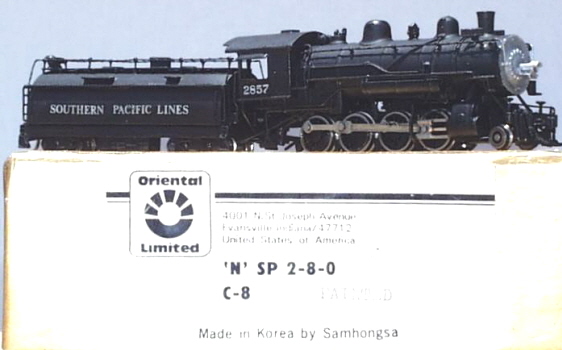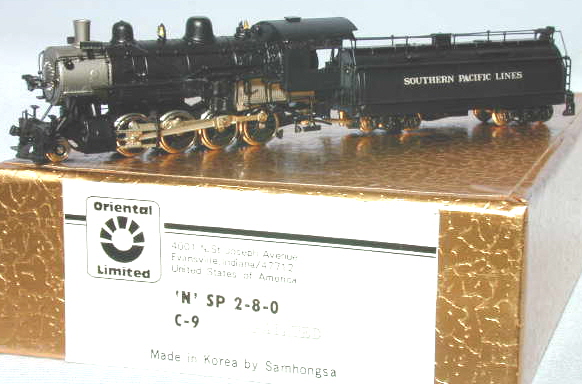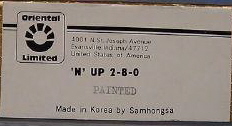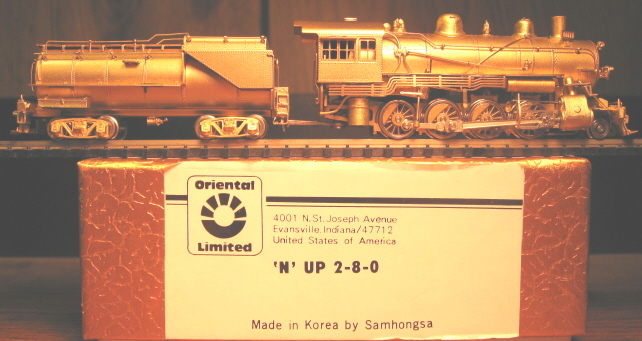







Introduced: 1985
These 2-8-0 models (SP C-8, SP C-9 and UP) all came out at the same time, and as such I'm going to go ahead and assume they all sport the same basic chassis/mechanism. All are gorgeous models that perform admirably. However, they are not without their minor flaws (but more on that in a moment).

The chassis is all metal, although fairly light (with most of the locomotive's heft coming from the shell). The motor is an open-sided 5-poler (no flywheels). Right-rail pickup is provided by the four right-side drivers. Left-rail pickup is provided by the four left-side tender wheels. All the rest of the wheels and drivers are electrically neutral. Current is transferred from the tender to the engine courtesy of a stiff wire on the drawbar. There are no traction tires. A short, two-piece plastic driveshaft turns a worm inside an enclosed gear tower, which in turn drives a gear on the #2 axle (from the front). All the other drivers are turned by the valve gear. All drivers are sprung. The gear tower and motor are both spring-mounted (with a torque arm connecting the two) - an extremely sophisticated design for the 1980's! All gearing is metal. There is no headlight. A dummy (fixed / non-operational) knuckle coupler is mounted to the pilot. There is no coupler on the tender, although a Micro-Trains friendly pocket (with ready-to-go screw) is provided. Wheels are low-profile, so no problems on Code-55 rails.
Overall performance is quite solid. The mechanism runs smoothly and relatively quietly at most speeds. However, the motor does tend to growl noticeably at really slow speeds. Also, the top-end speed is quite excessive and the entire engine becomes a bit wobbly when running very fast (although to be fair, there's really no need to ever operate it with that much throttle). Despite the drawbar-with-wire situation (a scheme I've never found particularly reliable), pickup is quite excellent (even through turnouts) and slow speed creep is most impressive. Despite the lack of traction tires, pulling power is surprisingly strong.
On the downside, I was not able to reliably operate mine on 9.75"-radius curves (where either the pilot truck or the drivers would derail fairly consistantly). Also, the cowcatcher is poised perilously close to the rails (I mean like within microns). And since the engine tends to tip ever so slightly on curves, short circuits are the inevitable result. I was ultimately able to solve this problem by bending the entire cowcatcher assembly upwards a little bit. Unfortunatey, said solution is a bit unsightly.
Minor quibbles aside though, these are beautiful models that run acceptably well. No, not quite up there in the "A" category - but awfully darned close.

To remove the locomotive shell, first remove the two small screws at the back (cab) end. Next, loosen the pilot truck screw enough that you can swing the truck out of the way and reveal the screw underneath. Remove that screw and the shell should lift up and off.
Grade: B